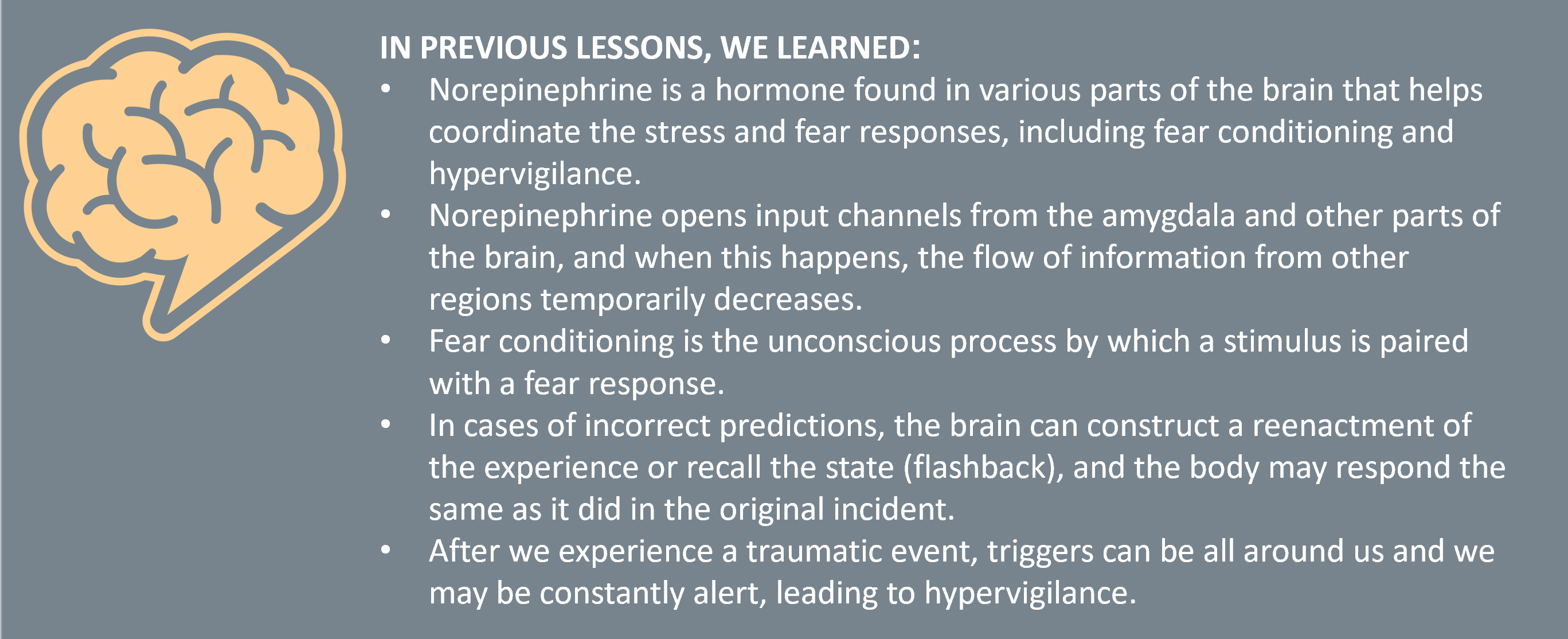
Lesson objective:
In this lesson, we learn about the roles of norepinephrine and serotonin hormones in enhancing hyper-vigilance while developing symptoms of PTSD
Those who have experienced trauma may experience a host of unwanted symptoms and changes in the aftermath of the incident. Even months and years later. Previously, we discussed how one specific hormone–norepinephrine–contributes with the best of intentions but unfortunate outcomes to the process of fear conditioning and flashbacks.
We mentioned that hypervigilance is a sort of over-correction by the predictive brain. It keeps your mental energy and attention fixated on possible threats and stressors.
After the brain and body experience a traumatic incident, the brain might be hypersensitive to potential similar events happening again. In other words, if something happened once, it might happen again, and all systems are thus constantly on “alert,” trying to protect you from harm.
Here again, norepinephrine works in the stress response system to keep the individual awake and in a state of high alertness, paying attention to possible stressors. That said, in order to sustain hypervigilance, it has a new partner this time.
When an individual is stressed, the sympathetic nervous system is activated. If you recall, we earlier discussed how the sympathetic nervous system is in charge of responding to stress by instigating the body’s fight or flight response. The activation of the sympathetic nervous system increases norepinephrine, which coordinates stress and fear responses in the brain. The release of norepinephrine also increases the blood flow to certain organs that are needed for fight or flight behavior.
The body engages in this response to make sure that it is ready for quick action in situations of danger. At this stage, norepinephrine partners specifically with another neurochemical, serotonin (5HT). Serotonin plays an important role in regulating sleep, appetite, sexual behavior, aggression, motor function, and blunting feelings of pain.
Serotonin turns these various systems up or down. Additionally, it opens up specific neural pathways to relay messages from one area of the brain to another, specifically the amygdala, hippocampus, hypothalamus, and prefrontal cortex. When an individual experiences traumatic stress, the transmission of serotonin changes, thus changing the communication between various parts of the brain involved in the stress response.

Ultimately, these serotonin changes can create or sustain that feeling of hypervigilance, alertness, and anxiety. It can allow unwanted and intrusive memories or thoughts associated with the traumatic event. And additionally, it can facilitate an increased startle and reaction to everything in the environment, where every little change in the surroundings feels somehow threatening. Serotonin also impacts impulsivity, which means that sometimes people who have experienced trauma really struggle to control their emotional, physical, or verbal responses to certain situations.
While these hormones are produced and released without our conscious control, there are ways to regulate their impact and effect, and we’ll discuss that in more detail later